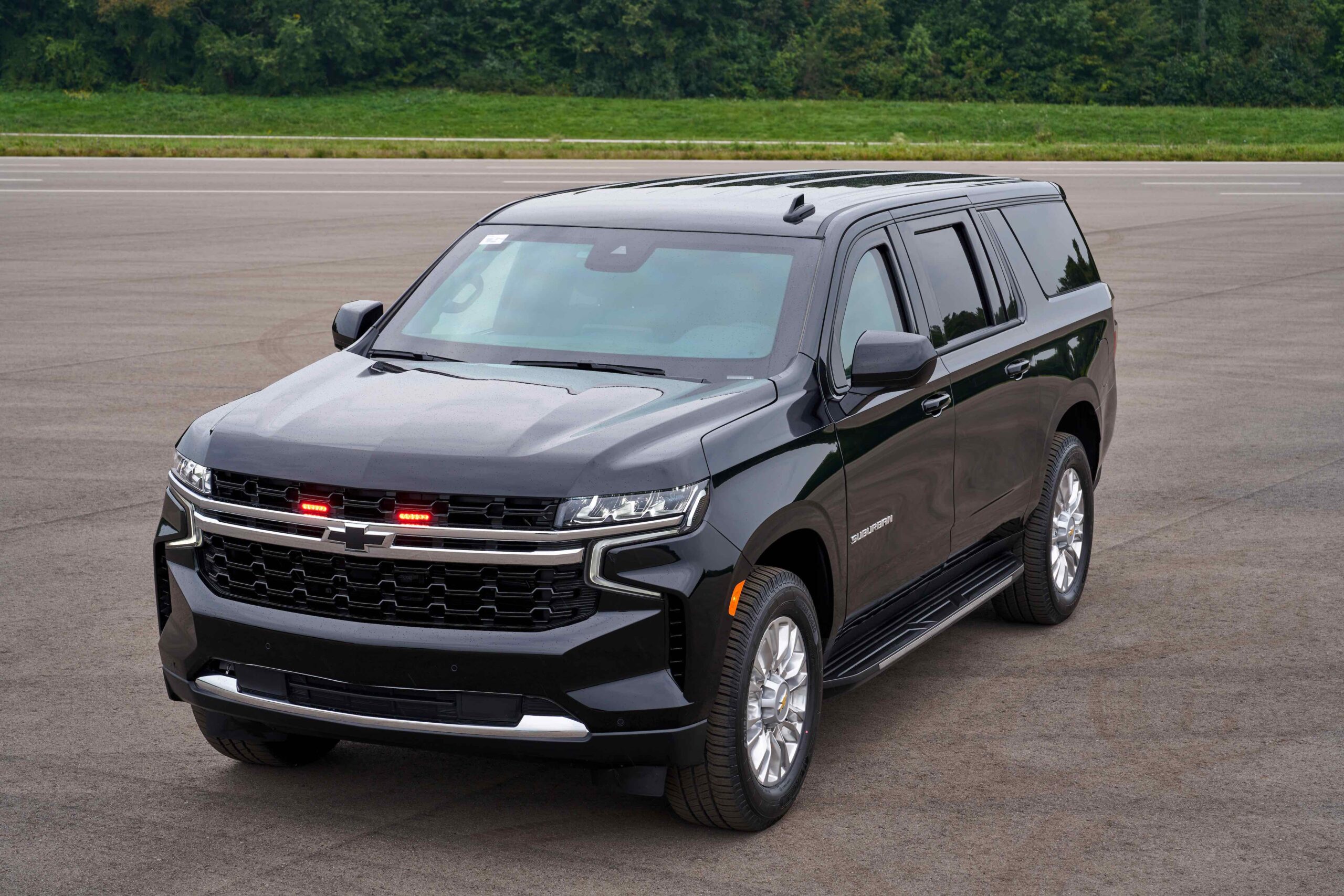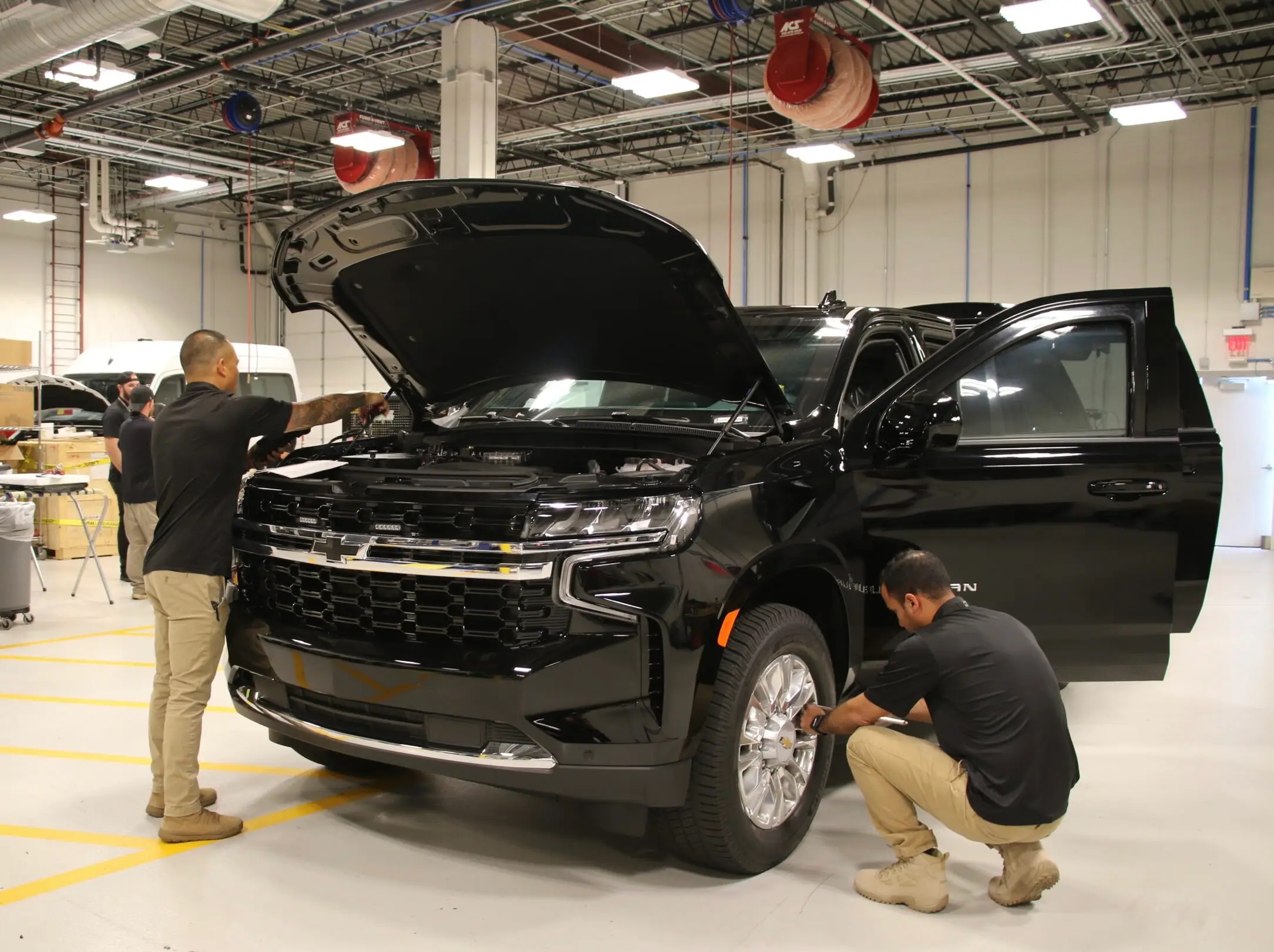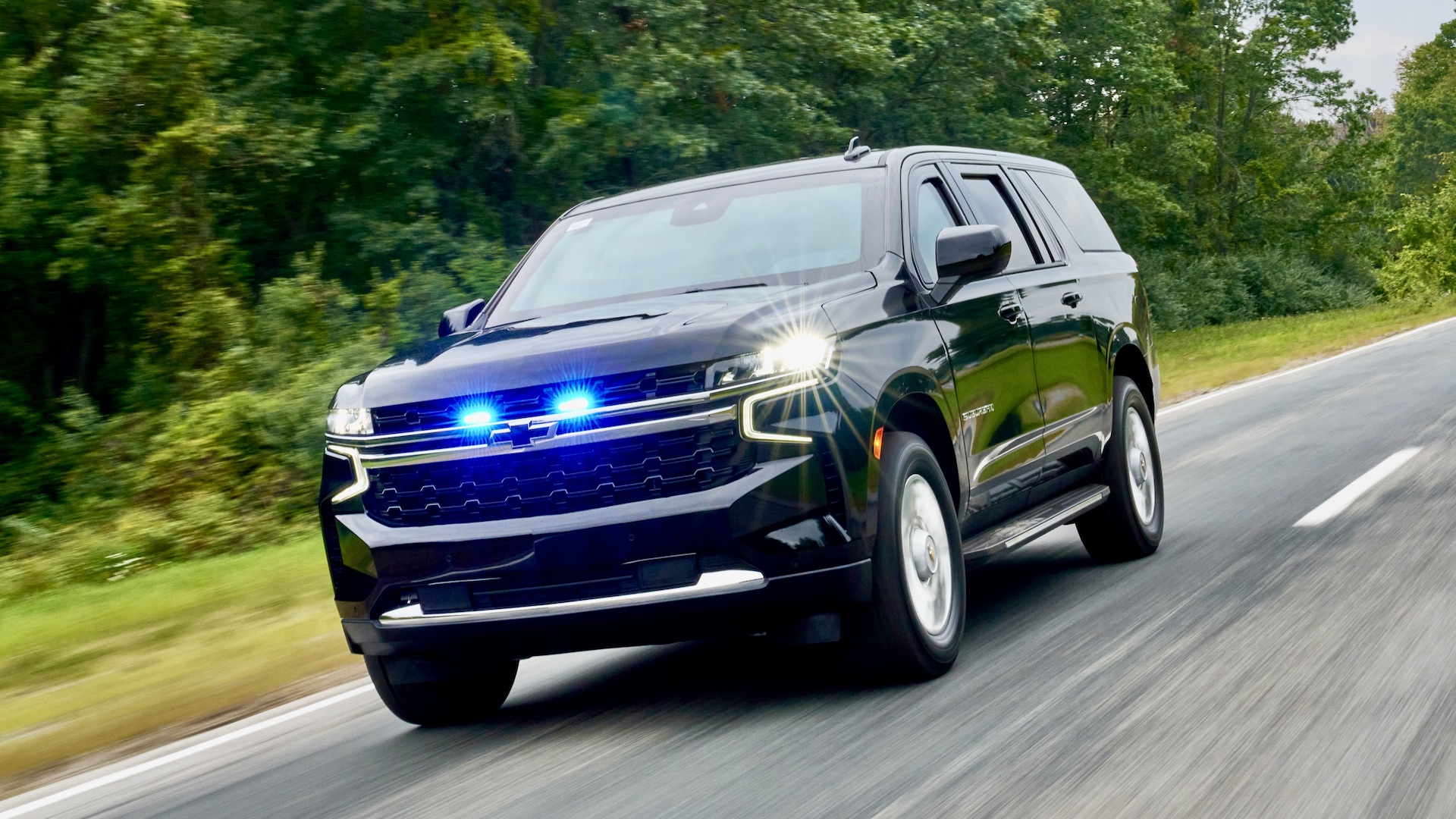GM Defense, a subsidiary of General Motors, has been awarded a contract by the Department of State (DoS) to commence full-rate production of heavy-duty up-armored Chevy Suburbans. Once in service, the armored SUVs will be used by the department’s Diplomatic Security Service (DSS) for the transportation of officials and dignitaries in challenging and potentially dangerous locations abroad, as well as for sensitive movements within the United States. You can read our earlier profile on the DSS’s future armored SUVs here.
The company announced on November 30 that it has been awarded a 10-year Indefinite Delivery Indefinite Quantity (IDIQ) full-rate production contract by the DoS to produce the up-armored Suburbans. The contract, according to GM Defense, has a ceiling value of $300 million, but that figure could grow if there ends up being greater demand for what are officially referred to simply as Heavy-Duty Sport Utility Vehicles.

Previously, the company had intended to start full production of the new armored SUVs in June 2024. It remains unclear if the new IDIQ contract award has accelerated this timeline. We’ve reached out to GM Defense for clarification. As many as 200 vehicles a year could be supplied to the DSS and other federal agencies over the next decade of production. It’s unclear how many up-armored SUVs the Department of State has now, by itself. As of 2016, it had 4,546 “active armored vehicles” of all types worldwide, according to a report from the department’s Office of the Inspector General.
The IDIQ contract award comes shortly after GM Defense delivered the first of 10 prototypes of its Suburban heavy-duty protected SUV to DSS on June 30 in Springfield, Virginia. Prior to this, DSS officials met with GM Defense representatives on June 29 for briefings and demonstrations of the prototype’s performance at Summit Point Raceway in West Virginia.

“This is a very important program for GM Defense as it showcases our ability to leverage the proven commercial platforms and world-class engineering and manufacturing processes of GM to provide a first-of-its-kind vehicle for the Department of State,” Steve duMont, president of GM Defense, said recently.
“Everyone on our team has committed to partnering with the State Department to ensure we deliver the best vehicles to support their mission. We look forward to continuing this partnership and bringing this exciting new platform to other U.S. government and allied defense and security customers around the world.”

While the new armored vehicle may look like a conventional Chevy Suburban, and it in fact shares some of the same parts as its commercial counterpart, it has been designed from the ground up by GM Defense for its role with the DSS.
As we noted in our earlier piece on the SUV, it is set to feature GM Defense’s new ‘eBOF’ and suspension. Standing for ‘electric body on frame,’ eBOF is a new chassis architecture that is designed to “support heavy payloads and can accommodate battery electric and hydrogen fuel cell propulsion systems, an armoring solution that meets protection and survivability requirements, and greater payload capacity for additional equipment to meet mission needs.”

Fielding bespoke, standardized production, armored SUVs is significant for the DSS, which has had to resort to third-party up-armoring for its protected SUVs in the past. This involves completely dismantling vehicles for welding in armored panels and installing ballistic glass, alongside other critical survivability upgrades, then adapting stock components around these alterations, as well as adding one-off fabricated ones. However, once these modifications are complete, its hand-modified armored SUVs often prove difficult to maintain and they have struggled to perform as desired, especially due to their increased gross weight and lack of supportability. You can read all about these issues in this past report of ours.
As GM Defense noted in relation to the IDIQ contract award, the in-house design and construction of the new armored suburbans will provide “superior vehicle performance while improving efficiencies in build and lead-time, resulting in faster vehicle delivery to the end user.” Moreover, GM Defense also provides “additional benefits through a robust manufacturer’s warranty and extended vehicle lifespan that delivers value as compared to the current multi-stage aftermarket armoring process,” per the company. Given that the DSS has struggled with fielding standardized armored SUVs in the past, progress made toward acquiring the new transports is no doubt welcome.

Of course, there will still remain a need for aftermarket armored SUVs in DSS service, and across the U.S. government and DoD more broadly, following the introduction of GM Defense’s production armored suburban. In 2021, the DoS issued a separate contract for the design of the next-generation Large Support Utility Commercial Vehicles (LSUVs) to Battelle, in collaboration with the Ford Motor Company, to up-armor the Ford Expedition.
However, a standardized, purpose-built model straight from the original equipment manufacturer (OEM) could be an attractive option for units that already operate armored Suburbans, as well as other protected SUVs, in similar roles. This includes the U.S. Secret Service and Special Operations Command. So the market will likely end up being much larger than the DSS, and there is also a very real possibility foreign customers could be interested in some variant of this unique SUV.
We will be keeping our eyes peeled for the first sighting of heavy-duty Chevy Suburbans in the wild as they begin their task of transporting high-profile VVIPs at home and abroad.
Contact the author: oliver@thewarzone.com
